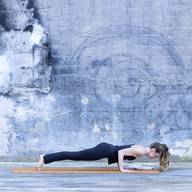The benefits and basics of Classical Pilates

A classical Pilates trainer will, therefore, be expected to let the class know when a movement being demonstrated and performed does not fall into the category of strictly classical Pilates. Classical Pilates teachers may wish to introduce movements from other disciplines into their classes in order to help their students achieve the ideal version of a classical movement or position.
A strictly classical Pilates class will also have a specific order of exercises that must be followed from the beginning to the end of the workout session. Classical trainers may decide at their own discretion to omit certain exercises in order to make the class more suited to a particular client’s level of ability, but this will only be done if there is a specific need rather than simply for the sake of improvisation.
Therefore, classical Pilates trainers will often have beginner, intermediate and advanced variations of Joseph Pilates specific guidelines. Joseph Pilate’s order of movements in a classical Pilates session is designed to warm up the body and activate the muscles, challenge the body and the mind of the client and then cool down and relax the muscles. The order of his technique flows from lying down positions, to sitting up positions, to kneeling positions and finally standing positions.
Classical Pilates is full of natural benefits for the body and mind. Each session is designed to physically challenge the client, especially in the area or abdominal strength. Clients in a classical Pilates workout are pushed to use their bodies to their maximum potentials. Regular classical Pilates classes can yield benefits such as reduced stress levels, improved coordination, improved flexibility, weight loss, improved muscle tone and strength and increased stability and balance.

